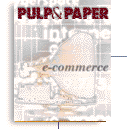| |
|
|
Chemicals a key part of the recipe
This is the first in a series of columns on chemicals that will run in future issues of Pulp & Paper. The Paper Chemicals column will appear every other month and will profile a key area of this broad range of products. These products encompass all mill areas including pulping, bleaching, papermaking, coating, and converting. This inaugural column sets the stage for upcoming discussions that will cover key market, price, demand, and supply trends, as well as new products and competitive issues. Areas to be examined in the future will run the gambit from commodity pulping and bleaching chemicals such as chlor-alkalies, to smaller volume, high-margin products such as specialty coating pigments. The range of products to be covered include functional chemicals that add strength or improve appearance as well as process chemicals that accomplish key tasks such as destroying “bugs.”
Introduction of a column covering chemicals not only reflects the integral role these products play in the successful operation of a mill but growing importance as a part of many mill operations. For example, the share of production held by minerals or pigments as a percent of total has been increasing for some time. This is due to increased levels of minerals in grades such as copy papers and groundwood grades via higher average filler loading or coat weights. In addition, it’s due to the fact that demand for value added grades of paper and board that include them are growing more rapidly than other grades.
How much pulp, paper, and board are produced directly influences the demand for chemicals, of course. However, a number of external or non-traditional factors have illustrated in recent years that other trends are also a key in determining demand. Examples include the impact of Cluster Rule regulations on the use of pulping and bleaching chemicals. In addition, developments in areas such as digital printing being driven by end-user needs are driving demand for new products in digital imaging papers. These developments—in some cases threats—and unforeseen ones in the future, will also be topics for future columns.
How big is the market? To start off coverage of this area, let’s first define the size, scope, and growth prospects for the wide range of products and markets called “paper chemicals.” How big is this market? A variety of measures can be used but one is certainly dollar sales volume. According to a recent report by The Freedonia Group, U.S. demand for pulp and paper chemicals is projected to reach $8 billion by 2003 vs. $6.4 billion in 1998, an annual growth rate of 4.6%. Demand as measured by volume will rise to 21.6 million tons by 2003, or growth of 2.4% annually. The study noted that dollar volume growth would be positively impacted by a shift in product mix to emphasize value-added specialty items at the expense of commodity chemicals.
Pulp & Paper Forecaster projects that U.S. production of paper and paperboard will reach 101.8 million tons by 2003 vs. about 96 million tons in 1999. By extrapolation, given that U.S. output is about 29% of world global production of paper and board, the world paper chemicals market is much larger.
What are some of the key factors driving overall volume growth? First, the importance of cost control will mean that papermakers are expected to increase chemical consumption as an alternative to capital expenditures. Second, legislation will continue to drive end users to consume more expensive chemicals. Finally, the study noted greater consumption of recycled fiber would require increasing quantities of specialty additives.
Constraints on growth. However, U.S. chemical demand growth will also be restrained or limited for a number of reasons, the study noted. For example, growth is likely to slow for some areas due to reasons such as competitive products. The Internet might slow demand for some products, although not in the short term. Another factor is an increase in net imports of pulp and paper, which will contribute to this by slowing production growth.
However, the use of chemicals per ton will increase however over the next decade according to the Freedonia study. The use of bleaching and pulping chemicals per ton of paper and board will continue to decline. In other areas average use per ton of product will increase for products such as filler and coating pigments and specialty additives and this will more than offset declines in other areas.
These trends will mean that dollar volume growth rates over the 1998-2003 period will be highest for pigments and specialty additives. Bleaching chemical dollar volumes will also rise significantly but at a slower rate than in the prior decade. Chemical demand for pulping and de-inking chemicals will show the slowest growth in volume based on sales in dollars.

|



